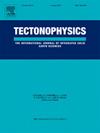Heat flow in an active plate margin: New Zealand's crustal thermal regime from borehole temperatures and numerical modelling
IF 2.7
3区 地球科学
Q2 GEOCHEMISTRY & GEOPHYSICS
引用次数: 0
Abstract
Geothermal heat provides a low-carbon energy source, which can be used directly or to produce electricity. It is an important part of New Zealand's energy mix, but to date geothermal use in New Zealand has been focused in known hot regions, particularly the Taupō Volcanic Zone (TVZ), above the subducting Pacific Plate. This study examines the complexity of New Zealand's heat flow and crustal temperature distribution, using borehole temperature measurements and conductive heat flow modelling, with a focus outside the TVZ. The modelling includes the transient heat flow effects of exhumation, basin subsidence and changes in crustal thickness, allowing gaps between sparse direct subsurface temperature measurements to be filled. Variations in New Zealand's heat flow largely reflect its position on a major plate boundary. The forearc region of the Hikurangi Subduction Margin has broadly low heat flow (30–50 mWm−2), associated with the down-going Pacific Plate, consistent with evidence from geophysical models and fluid chemistry. Heat flow is elevated in the Coromandel Volcanic Zone (100–140 mWm−2), north of the TVZ, which may be associated with volcanism from 18 to 4 Ma. High heat flow in Northland (100–220 mWm−2) is associated with more recent igneous activity. High heat flow along the Alpine Fault collisional plate boundary (150–250 mWm−2) is largely a result of rock advection (exhumation), which has been occurring at up to 6 mm yr−1 over the last 2 Ma. These results demonstrate the importance of including transient processes in modelling heat flow in active areas.
Plain language summary
Understanding the temperatures in the upper 5–10 km of the Earth is important for many reasons. These include a growing drive to expand the use of geothermal energy, or heat energy in the earth, as a low-carbon way of producing electricity or direct use of heat for processes that would otherwise use electricity or fossil fuels. Knowing the temperature distribution is also important in understanding processes such as earthquake rupture. Subsurface temperatures have been measured in boreholes in some locations, but there are also large areas without any measurements. This paper uses our knowledge of geological processes occurring in New Zealand to predict underground temperatures between measurement locations. The underground temperatures of the Earth generally increase with depth, but the rate of increase varies greatly in different places. This variation is largely due to New Zealand's location on the boundary between two tectonic plates, the Pacific and Australian Plate. In the North Island, the Pacific Plate is subducting beneath the Australian Plate. This causes low crustal temperatures along the southeastern margin of the North Island but high temperatures in the central North Island (Taupō Volcanic Zone). In the South Island, the Pacific and Australian Plates are colliding, and uplift and erosion of the Southern Alps causes high temperatures at shallow depths along this mountain range.

活动板块边缘的热流:来自钻孔温度和数值模拟的新西兰地壳热状态
地热提供了一种低碳能源,可以直接利用或发电。它是新西兰能源结构的重要组成部分,但迄今为止,新西兰的地热利用主要集中在已知的炎热地区,特别是太平洋板块俯冲上方的陶普火山带(TVZ)。本研究考察了新西兰热流和地壳温度分布的复杂性,利用钻孔温度测量和传导热流模型,重点研究了新西兰的热流和地壳温度分布。该模型包括挖掘、盆地沉降和地壳厚度变化的瞬态热流效应,从而填补了稀疏的直接地下温度测量之间的空白。新西兰热流的变化很大程度上反映了它在一个主要板块边界上的位置。Hikurangi俯冲边缘的弧前区域具有广泛的低热流(30-50 mWm−2),与太平洋板块下行有关,与地球物理模型和流体化学证据一致。在TVZ以北的Coromandel火山区(100 ~ 140 mWm−2)热流升高,这可能与18 ~ 4 Ma的火山活动有关。北部地区的高热流(100-220 mWm−2)与最近的火成岩活动有关。沿阿尔卑斯断层碰撞板块边界的高热流(150-250 mWm−2)主要是岩石平流(呼出)的结果,在过去的2 Ma中发生了高达6 mm yr−1。这些结果表明,包括瞬态过程在模拟热流活跃地区的重要性。由于许多原因,了解地球上层5-10公里的温度是很重要的。其中包括越来越多地扩大地热能或地球热能的使用,作为一种低碳发电方式,或将热能直接用于原本需要使用电力或化石燃料的过程。了解温度分布对于理解地震破裂等过程也很重要。在一些地方的钻孔中测量了地下温度,但也有大片地区没有任何测量。本文利用我们在新西兰发生的地质过程的知识来预测测量地点之间的地下温度。地球的地下温度通常随着深度的增加而增加,但不同地方的增加速度差别很大。这种变化很大程度上是由于新西兰位于两个构造板块——太平洋板块和澳大利亚板块的交界处。在北岛,太平洋板块俯冲到澳大利亚板块之下。这导致北岛东南边缘的地壳温度较低,而北岛中部(陶普火山带)的地壳温度较高。在南岛,太平洋板块和澳大利亚板块正在碰撞,南阿尔卑斯山的隆起和侵蚀导致了该山脉浅层深处的高温。
本文章由计算机程序翻译,如有差异,请以英文原文为准。
求助全文
约1分钟内获得全文
求助全文
来源期刊

Tectonophysics
地学-地球化学与地球物理
CiteScore
4.90
自引率
6.90%
发文量
300
审稿时长
6 months
期刊介绍:
The prime focus of Tectonophysics will be high-impact original research and reviews in the fields of kinematics, structure, composition, and dynamics of the solid arth at all scales. Tectonophysics particularly encourages submission of papers based on the integration of a multitude of geophysical, geological, geochemical, geodynamic, and geotectonic methods
 求助内容:
求助内容: 应助结果提醒方式:
应助结果提醒方式:


